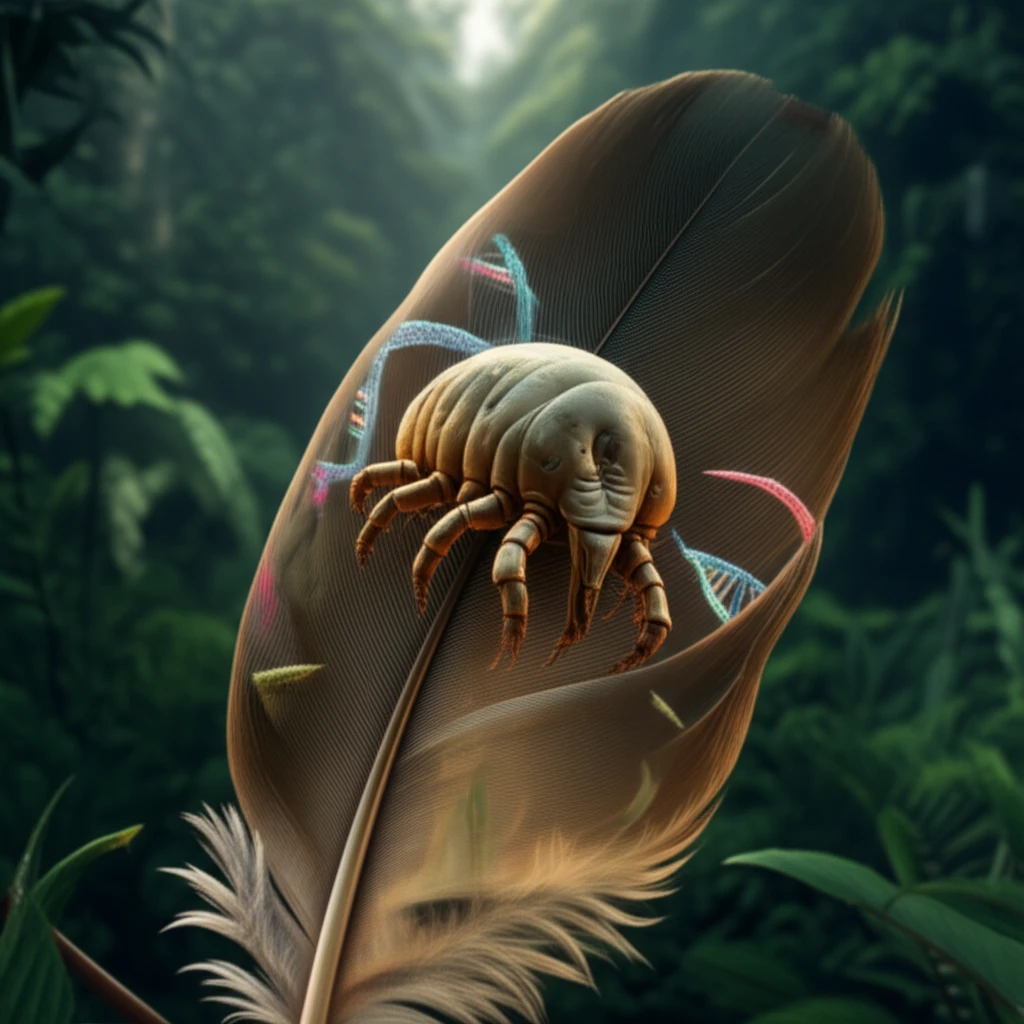
Feather Mites: Are Tiny Bird Parasites a Big Deal?
"Dive into the world of quill mites and discover how these minuscule creatures might impact our understanding of bird health and evolution."
The world is full of creatures great and small, and sometimes it's the smallest ones that offer the biggest insights. Quill mites, members of the family Syringophilidae, are microscopic ectoparasites that call the inside of bird feathers home. These mites are highly specialized, spending their entire lives within the quills of various feather types.
While they might sound like a minor nuisance, quill mites are far from inconsequential. Scientists have identified hundreds of species, each often specific to a particular bird host. This specificity makes them valuable tools for studying bird evolution, ecology, and even the impact of environmental changes on bird populations.
Recent research has unveiled two new species of quill mites, both belonging to the genus Psittaciphilus. These discoveries, found on pigeons and doves in South America, add another layer to our understanding of these tiny creatures and their role in the avian world. Let’s delve into what makes these mites so interesting and why their discovery matters.
What are Quill Mites and Why Should You Care?

Quill mites, scientifically known as Syringophilidae, are a family of highly specialized mites that live inside the feathers of birds. Unlike other external parasites that crawl on the surface, these mites burrow into the quills, feeding on feather tissue and fluids. This unique lifestyle makes them a fascinating subject of study for several reasons.
- Evolutionary Insights: Mite-host relationships can mirror bird evolution.
- Ecological Indicators: Mite presence can reflect bird health and environmental stress.
- Biodiversity Measures: Discovering new mite species expands our understanding of overall biodiversity.
The Bigger Picture: What Does This Mean?
The discovery of new quill mite species, like Psittaciphilus montanus and Psittaciphilus patagioenas, highlights the vast amount of biodiversity still waiting to be uncovered. It also underscores the importance of studying even the smallest creatures, as they can offer invaluable insights into the health and evolution of entire ecosystems. By continuing to explore these microscopic worlds, we can gain a deeper understanding of the complex relationships that shape our planet.
